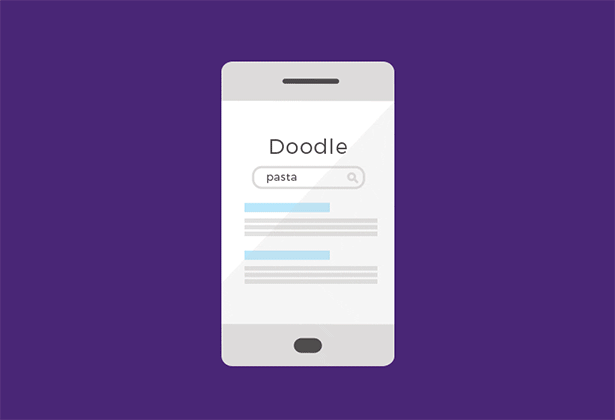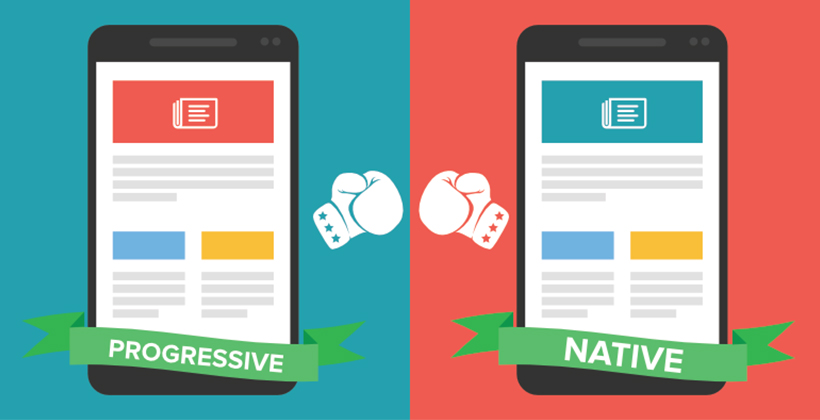What is a progressive web app? Today, businesses need to target customers on mobile devices to increase engagement and boost sales. The question is no longer if they should do it, but how?
Every trend has it’s life and prolongs for a certain time. Are PWAs going to replace Native Mobile Apps? To answer that question with precision, we must look at some facts and figures.
Let’s begin by understanding what PWA’s are.
What is a Progressive Web App?

What is a progressive web app? A PWA is an application software delivered through the web. Progressive Web Apps are developed using standard web technologies like HTML, JavaScript, and CSS. PWAs work on any platform that uses a standards-compliant browser.
Progressive Web Apps aren’t difficult to build when you have web developers to do that for you. They are mobile apps that are delivered through the web.
PWAs functions like a native application majorly due to the use of app shells, that enable gestures and navigation, just like an app.
Note – You don’t need to download a PWA from an AppStore or a PlayStore. They run on web browsers.
PWAs load quickly even if you access them from areas with low internet connectivity. Also, these progressive web apps remain updated at all given times, displaying the latest version upon launching.
Before we get into the difference between PWAs and Native Apps, let me walk you through some great examples of Progressive Web Apps.
- Forbes
- 9Gag
- Spotify
- Uber
Are PWAs Replacing Native Apps?

There has been a significant rise in mobile platforms, and the comparison between PWAs and Native Apps has become even more fierce. Many people believe that Web Apps are going to kill Native apps. On the contrary, a lot of people are sceptical about all the talk on PWAs.
In the beginning, when native mobile apps hit the market, people went all gaga about it and couldn’t get enough of native apps. Back in the day, Native apps changed the way consumers interacted with their smartphones and brands.
However, in recent years, trends have changed. According to ComScore, today, most of the consumers do not download any apps (in a month), which means that if a native app has to be successful, it’s got to be extraordinary, which is uncommon for a business app.
The advantages of PWAs over Native Apps!
As compared to a couple of years ago, the mobile web has evolved. Today, all websites have responsive designs but even then, they aren’t able to provide the kind of user experience that mobile users are looking for.
A good mobile website needs to be quick and should have an app shell, and PWAs facilitate that. Moreover, the fact that PWAs make the most of both worlds (functionality of an app and accessibility of a website) is like icing on the cake.
Progressive Web Apps are turning out to be a bliss for businesses that run online. Developers find it easy to dynamically add stores in PWAs, whereas it was a daunting task with typical websites.
On the other hand, Native apps facilitate excellent mobile experience, but then they are expensive and, lately, ineffective. Let’s look at the reasons why PWAs are replacing Native apps.
There Are Too Many Native Apps
You all must have heard of the saying that “Too much of anything is not good!” That is precisely what I mean when I say that there are too many native apps. App stores are entirely flooded with applications.
Adding to the agony, many of these applications are from big players, which people recognize and that minimizes the chances for small players to reach their full potential in terms of app downloads.
According to Forrester Research reports, mobile users in the United States and the United Kingdom spend 80 per cent of their time spent on apps on just five apps that belong to the following categories.
- Social Media (Facebook)
- Messaging (Snapchat
- Games (PUBG)
- Entertainment (Netflix)
What does this mean for you?
Until and unless your app is one of a kind and you are highly aware of your target audience, building a native app is going to remain a gamble. If you happen to be a business at an early stage, going forward with a native app can involve huge risks.
Today, even well-established companies having their core audience identified think twice before competing in the app store because of the competition.
PWAs – A Unified Experience
The most salient point here is that Native Apps only work on a single platform, whereas the possibilities are endless when it comes to Progressive Web Apps.
Naturally, people don’t rely on a single device. Sometimes, they use a smartphone, sometimes the laptop or even smartwatches.
PWAs run on any device that supports a browser. So basically, PWAs enable one app to run on multiple platforms, which makes it convenient for companies as they do not need to maintain specialized and skilled teams.
Furthermore, with PWAs, the need for circulating binaries ensuring compatibility with service APIs becomes dispensable as the app has one single version.
PWAs – Improved SEO
When I say improved SEO, I don’t mean that PWA brings SEO advantage all by itself. However, here’s what it does:
- Increases performance and engagement
- Facilitates Faster indexing
In PWAs, server worker scripts are independent of the website, allowing pages to request raw data instead of the layout or the styling information. This makes PWAs faster as compared to traditional sites.
When you look at this from the SEO perspective, this facilitates higher rankings because search engines tend to identify websites that are smooth and speed optimized.
PWAs also quicken indexability, enabling businesses with a competitive edge while reducing the number of steps that users need to involve in to engage with your app.
Moreover, Unlike with native apps, there’s no probability of a PWA getting buried in the app store.
PWAs – Easy Sharing
Now when you come across a funny meme, what do you do? You share it! The way you share it is through social media or instant messaging.
Companies put in a lot of time and effort to create content that can be shared widely as it is one of the most effective digital marketing strategies in place. Native apps continue to scuffle in this space.
However, that is not the case with progressive web apps. PWAs are easy to share and are indeed the future.

What is a progressive web app? – Final Words
PWAs facilitate uniformity, shareability, visibility, and are completely feature-packed. However, if building a Native App suits your business more, that is what you should choose.
Mobile sites and native apps offer their own sets of advantages and disadvantages, but PWAs are enabling businesses to experience the best of both worlds.
Now that we know what are the pros and cons of both, PWAs and Native Apps, You can choose what’s best for your business and developing which amongst the two is a better option. Good Luck
